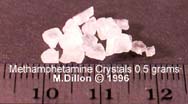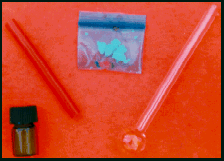Drugs Information and Drugs Factfile
Information on Drugs for everyone including parents - amphetamine and Methamphetamine
Drugs Information, what you really should know about, drugs facts on and facts about Amphetamine and Methamphetamine
A Guide for worried parents, teenagers who are using drugs or thinking about using drugs and anyone who wants to know more about the subject.
This website has been accredited by the Matthew Project in Norwich, Greater Manchester Police force and the Office of National Drug Control Policy (The White House)
![]()
Methamphetamine is a stimulant drug chemically related to amphetamine(speed) but with stronger effects on the central nervous system. Methamphetamine is used in pill form, or in powdered form by snorting or injecting. Crystallized methamphetamine known as "ice," "crystal," or "glass," is a smokable and more powerful form of the drug.
|
Common street names: sniffed, snorted up nose, injected, tablet form, swallowed, mixed with a drink, power put in cigarette paper and swallowed. |
Effects |

|
Risks:
What goes up must come down! speed gives you extra energy in the short term,
but there is a payback the next day, known as a downer, similar to a very bad
hangover. After using, people often feel tired, depressed and hungry and can
become physically run down because of lack of sleep and food. Using can make
people feel very anxious, messes up sleep patterns, can cause paranoia and
violent mood changes. Long term users can suffer from severe depression and
other mental disorders, can produce aggressive behaviour, heart failure and
damage blood vessels. Resistance to disease is lowered leading to
uncomfortable itching. Hiv and Aids, and Hepatitis are risks of sharing
needles. Amphetamines are usually class b drugs but if injected, can become a
class a drug. Possessing, supplying or selling is illegal and carries
penalties of prison or fines unless you have them on prescription.
| Short-term & Long-term effects: | |||
| increased heart rate and blood pressure | increased wakefulness;insomnia | increased physical activity | decreased appetite |
| extreme anorexia |
hyperthermia, convulsions, and cardiovascular
problems, which can lead to death |
euphoria |
irratability, confusion |
| anxiety, paranoia, or violent
behavior |
can cause irreversible damage to blood vessels in the brain, producing strokes | respiratory problems | |
Methamphetamine is an increasingly popular at raves (all night dance parties), and as part of a number of drugs used by college-aged students. Marijuana and alcohol are commonly listed as additional drugs of abuse among methamphetamine treatment admissions. Most of the methamphetamine-related deaths (92%) reported in 1994 involved methamphetamine in combination with at least one other drug, most often alcohol (30%), heroin (23%), or cocaine (21%). Researchers continue to study the long-term effects of methamphetamine use.
For information about other drugs, return to Drug Information Page.
